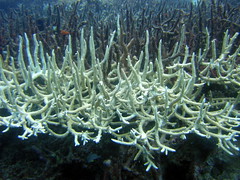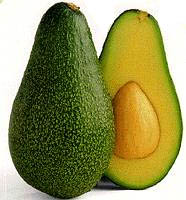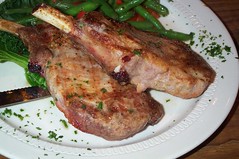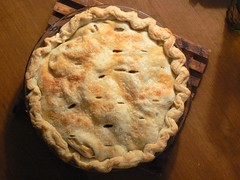| 6479020021 | Diagnostic and Statistical Manual of Mental Disorders (DSM-5) | decribes and provides diagonsitc critrea for approxiamtely 250 different psychological disorders |  | 0 |
| 6479020022 | Anxiety | An emotional state of high energy, with the stress response as the body's reaction to it. | | 1 |
| 6479020023 | Panic Disorder | An anxiety disorder marked by unpredictable minutes-long episodes of intense dread in which a person experiences terror and accompanying chest pain, choking, or other frightening sensations. | | 2 |
| 6479020024 | Generalized Anxiety Disorder | Disorder in which a person has feelings of dread and impending doom along with physical symptoms of stress more days than not , which lasts 6 months or more | | 3 |
| 6479020025 | Phobias | an irritation persistent fear of something |  | 4 |
| 6479020026 | Obsessive-Compulsive Disorder | An anxiety disorder characterized by unwanted repetitive thoughts (obsession) and/ or actions (compulsions). | | 5 |
| 6479020027 | Obsessions | persistent ideas, thoughts, or impulses that are unwanted and inappropriate, causing marked distress | | 6 |
| 6479020028 | Compulsions | The person's need to perform REPETITIVE BEHAVIORS like hand washing, ordering, checking, or mental acts like prayers, counting, repeated words, etc | | 7 |
| 6479020029 | Hoarding Disorder | A disorder in which the person has a compulsive need to acquire objects and extreme difficulty in disposing of those objects. | | 8 |
| 6479020030 | Post-Traumatic Stress Disorder | an anxiety disorder characterized by haunting memories, nightmares, social withdrawal, jumpy anxiety, and/or insomnia that lingers for four weeks or more after a traumatic experience | | 9 |
| 6479020031 | Somatic Symptom Disorder | Being in physical pain, but nothing to cause pain or severity of pain. | | 10 |
| 6479020032 | Illness Anxiety Disorder | A disorder defined by excessive concern and help seeking about health concerns in the absence of major physical symptoms. | | 11 |
| 6479020033 | Conversion Disorder | A rare somatoform disorder in which a person experiences very specific genuine physical symptoms for which no physiological basis can be found. | | 12 |
| 6479020034 | Dissociative Amnesia | Dissociative disorder characterized by the sudden and extensive inability to recall important personal information, usually of a traumatic or stressful nature. | | 13 |
| 6479020035 | Dissociative Fugue | The sudden loss of memory for one's personal history, accompanied by an abrupt departure from home and the assumption of a new identity | | 14 |
| 6479020036 | DIssociative Identity Disorder | A rare dissociative disorder in which a person exhibits two or more distinct and alternating personalities. Also called multiple personality disorder. | | 15 |
| 6479020037 | Major Depressive Disorder | A mood disorder in which a person experiences, in the absence of drugs or a medical condition, two or more weeks of significantly depressed moods, feelings of worthlessness, and diminished interest or pleasure in most activities | | 16 |
| 6479020038 | Premenstrual Dysphoric Disorder | a disorder marked by repeated experiences of significant depression and related symptoms during the week before menstruation | | 17 |
| 6479020039 | Bipolar Disorder | A mood disorder in which the person alternates between the hopelessness and lethargy of depression and the overexcited state of mania. | | 18 |
| 6479020040 | Psychosis | A mental disorder characterized by a disconnection from reality
schizophrenia is an example | | 19 |
| 6479020041 | Schizophrenia | A group of severe disorders characterized by disorganized and delusional thinking, disturbed perceptions, and inappropriate emotions and actions | | 20 |
| 6479020042 | Delusions | False beliefs, often of persecution or grandeur, that may accompany psychotic disorders | | 21 |
| 6479020043 | Catatonia | Disorganized motor behavior characterized by various unusual physical movements or stillness
a state of unresponsiveness to one's outside environment, usually including muscle rigidity, staring, and inability to communicate | | 22 |
| 6479020044 | Hallucinations | False sensory experiences, such as seeing something in the absence of an external visual stimulus. Most commonly hearing voices. | | 23 |
| 6479020045 | Antisocial | A personality disorder in which the person (usually a man) exhibits a lack of conscience for wrongdoing, even toward friends and family members; may be aggressive and ruthless or a clever con artist.
A type of personality disorder marked by impulsive, callous, manipulative, aggressive, and irresponsible behavior that reflects a failure to accept social norms. | | 24 |
| 6479020046 | Attention-Deficit/Hyperactivity DIsorder | A persistent pattern of inattention and/or hyperactivity-impulsivity that interferes with functioning or development, as characterized by inattention and hyperactivity or impulsivity. They can have difficulty with details or organization, and may fidget, blurt out, or move about when expected to be still and attentive. | | 25 |
| 6479020047 | Autism Spectrum Disorder | A disorder characterized by deficits in social relatedness and communication skills that are often accompanied by repetitive, ritualistic behavior. | | 26 |
| 6479020048 | Organic Disorders | psychological issues caused by issues in the brain. Changes in a person's brain can have a huge effect on how they function day-to-day. They can lead to changes in the way a person thinks or behaves. | | 27 |
| 6479020049 | Neurocognitive Disorders | A disorder caused by brain dysfunction that affects thinking processes, memory, consciousness, and perception | | 28 |
| 6479020050 | Alzheimer's Disease | A progressive and irreversible brain disorder characterized by gradual deterioration of memory, reasoning, language, and finally, physical reasoning | | 29 |
| 6479020052 | Psychiatrist | A medical doctor who has specialized in the diagnosis and treatment of psychological disorders. Can prescribe medications. | | 30 |
| 6479020053 | Clinical Psychologists | A psychologist who diagnoses and treats people with emotional disturbances. | | 31 |
| 6479020054 | Counseling Psychologists | A psychologist who usually helps people deal with problems of living | | 32 |
| 6479020055 | Psychoanalysts | practitioners of psychoanalysis who are schooled in the Freudian tradition
complete 3 to 5 years of training in special psychotherapeutic technique called psychoanalysis in which the patient freely related his or her thoughts and associations to the analysts, who does not interfere with the process | | 33 |
| 6479020056 | Clinical or Psychiatric Social Workers | healthcare profession based on theories and methods of prevention and treatment in providing behavioral healthcare (mental health and substance use disorder) services, with special focus on bio-psychosocial problems and disorders | | 34 |
| 6479020057 | Deinstitutionalization | 1960's and 1970's governmental policy that focused on releasing hospitalized psychiatric patients into the community and closing mental hospitals | | 35 |
| 6479020059 | Free Association | In psychoanalysis, a method of exploring the unconscious in which the person relaxes and says whatever comes to mind, no matter how trivial or embarrassing. | | 36 |
| 6479020060 | Manifest Content | According to Freud, the remembered story line of a dream (as distinct from its latent, or hidden, content). | | 37 |
| 6479020061 | Hypnosis | A social interaction in which one person suggests to another that certain perceptions, feelings, thoughts, or behaviors will spontaneously occur | | 38 |
| 6479020062 | Resistance | In psychoanalysis, the blocking from consciousness of anxiety-laden material.
A reluctance to cooperate with treatment for fear of confronting unpleasant unconscious material. | | 39 |
| 6479020063 | Transference | In psychoanalysis, the patient's transfer to the analyst of emotions linked with other relationships (such as love or hatred for a parent).
(psychoanalysis) the process whereby emotions are passed on or displaced from one person to another | | 40 |
| 6479020064 | Catharsis | An emotional discharge that brings about a moral or spiritual renewal or welcome relief from tension and anxiety | | 41 |
| 6479020065 | Unconditional Positive Regard | According to Rogers, an attitude of total acceptance toward another person.
The acceptance and appreciation of an individual, faults and all. This was proposed by humanist Carl Rogers and is a critical component of client-centered therapy | | 42 |
| 6479020066 | Gestalt Theory | a theory based on the idea that the whole of personal experience is different from simply the sum of its constituent elements
This psychological theory, originated by Fritz Perls, encourages people to stand apart from beliefs, biases, and attitudes derived from the past. The goal is to fully experience and perceive the present in order to become a whole and integrate person. | | 43 |
| 6479020067 | Behavior Therapy | psychotherapy that seeks to extinguish or inhibit abnormal or maladaptive behavior by reinforcing desired behavior and extinguishing undesired behavior
a treatment process that focuses on changing unwanted behaviors through rewards and reinforcements | | 44 |
| 6479020068 | Systematic Desensitization | A type of exposure therapy that associates a pleasant relaxed state with gradually increasing anxiety-triggering stimuli. Commonly used to treat phobias. | | 45 |
| 6479020069 | Anxiety Hierarchy | constructed by patient in which feared situations are arranged from least to most anxiety provoking; used to set sequence for therapy | | 46 |
| 6479020070 | Flooding | A behavioral technique used to treat phobias in which the client is presented with the feared stimulus until the associated anxiety disapears. | | 47 |
| 6479020071 | Aversive Conditioning | A type of counterconditioning that associates an unpleasant state (such as nausea) with an unwanted behavior (such as drinking alcohol)
associates an unpleasant state with an unwanted behavior | | 48 |
| 6479020072 | Behavioral Modification | A systematic approach to changing behavior through the application of the principles of conditioning.
set of techniques to use reinforcement theory to modify human behavior | | 49 |
| 6479020073 | Token Economies | A technique used in behavior therapy to reinforce behavior by giving tokens (that can be cashed in for something desirable) for appropriate behavior. | | 50 |
| 6479020074 | Social Skills Training | A behavior therapy designed to improve interpersonal skills that emphasizes shaping, modeling, and behavioral rehearsal. | | 51 |
| 6479194200 | Selective Mutism | Consistent failure to speak in specific social situations in which there is an expectation for speaking (e.g., at school) despite speaking in other situations | | 52 |
| 6479197990 | Separation Anxiety Disorder | Developmentally inappropriate and excessive fear or anxiety concerning separation from those to whom the individual is attached | | 53 |
| 6479213511 | Specific Phobia | Anxiety disorder characterized by irrational and persistent fear of a particular object or situation, along with a compelling desire to avoid it. | | 54 |
| 6479217772 | Agoraphobia | An abnormal fear of open or public places
anxiety disorder characterized by marked fear and avoidance of being alone in a place from which escape might be difficult or embarrassing | | 55 |
| 6479223532 | Social Anxiety Disorder | an anxiety disorder involving the extreme and irrational fear of being embarrassed, judged, or scrutinized by others in social situations | | 56 |
| 6479244848 | Body Dysmorphic Disorder | Preoccupation with a defect in appearance; the defect is either imagined, or, if a slight physical anomaly is present, the individual's concern is markedly excessive, and at some point perform repetitive behaviors or mental acts in response to the appearance concerns (excessive grooming, comparing self to others)
Causes significant distress or impairment in social, occupational, or other functioning | | 57 |
| 6479284665 | Trichotillomania | a disorder characterized by the repeated pulling out of one's own hair (under Obsessive-Compulsive & Related Disorders DSM-5) | | 58 |
| 6479293928 | Excoriation Disorder | a disorder in which people repeatedly pick at their skin, resulting in significant sores or wounds. (under Obsessive-Compulsive & Related Disorders DSM-5) | | 59 |
| 6479303624 | Reactive Attachment Disorder | product of severely dysfunctional early relationships between principle caregiver and child ---- results when caregiver disregards child's physical/emotional needs--> behavioral/interpersonal problems later in life (fearful/inhibited/withdrawn/disruptive) | | 60 |
| 6479328022 | Disinhibited Social Engagement Disorder | A pattern of behavior in which a child actively approaches and interacts with unfamiliar adults and has experienced a pattern of extremes of insufficient care; at least 9 mo old | | 61 |
| 6479341809 | Posttraumatic Stress Disorder | Trauma- and Stressor-Related Disorders
In this disorder, the person is exposed to a major stressor, re-experiences the events through thoughts and dreams, avoidance of stimuli associated with the event , increased arousal like insomnia, hyper vigilance, and difficulty concentrating; these symptoms last for more than 1 month. | | 62 |
| 6479355316 | Dissociative Identity Disorder | Disruption of identity characterized by two or more distinct personality states with gaps in memory causing distress or impairment in social, occupational, or other important areas of functioning | | 63 |
| 6479391280 | Depersonalization/Derealization Disorder | Experiences in unreality, detachment, or being an outside observer with respect to one's thoughts, feelings, sensations, body, or actions or in respect to one's environment. Reality testing remains intact. | | 64 |
| 6479410229 | Somatic Symptom and Related Disorders | Disorders characterized by bodily symptoms along with associated psychological symptoms.
These are conditions in which a person experiences bodily symptoms (e.g., pain, fatigue) associated with significant distress or impairment. DSM-5 includes Somatic Symptom Disorder, Illness Anxiety Disorder, Conversion Disorder (motor or sensory function), Psychological Factors Affecting Other Medical Conditions, Factitious Disorder (fake symptoms but with no apparent gain or reward) | | 65 |
| 6479479877 | Antisocial Personality Disorder | A personality disorder in which the person (usually a man) exhibits a lack of conscience for wrongdoing, even toward friends and family members. May be aggressive and ruthless or a clever con artist. | | 66 |
| 6479484318 | Dependent Personality Disorder | A personality disorder characterized by a pattern of clinging and obedience, fear of separation, and an ongoing need to be taken care of. | | 67 |
| 6479489001 | Narcissistic Personality Disorder | characterized by inflated or grandiose sense of themselves and an extreme need for admiration (expect others to notice their special qualities, even when their accomplishments are ordinary, and they enjoy basking in the light of adulation; self-absorbed, lack empathy for others; strong sense of entitlement; tend to be preoccupied with fantasies of success and power, ideal love, or recognition for brilliance or beauty) | | 68 |
| 6479505331 | Histrionic Personality Disorder | a personality disorder characterized by excessive emotionality and preoccupation with being the center of attention; emotional shallowness; overly dramatic behavior | | 69 |
| 6479866859 | Paranoid Personality Disorder | type of personality disorder characterized by extreme suspiciousness or mistrust of others | | 70 |
| 6479877868 | Schizoid Personality Disorder | Which personality disorder is characterized by a lifelong pattern of voluntary social withdrawal, and is often perceived as eccentric and reclusive? Restricted range of emotional expression | | 71 |
| 6479888331 | Schizotypal Personality Disorder | Pattern of acute discomfort in close relationships, cognitive or perceptual distortions, and eccentricities of behavior. | | 72 |
| 6479899989 | Borderline Personality Disorder | Pattern of instability in interpersonal relationships, self-image, and affects, and marked impulsivity. | | 73 |
| 6479918580 | Avoidant Personality Disorder | Pattern of social inhibition, feelings of inadequacy, and hypersensitivity to negative evaluation. | | 74 |
| 6479940043 | Obsessive-compulsive Personality Disorder | Pattern of preoccupation with orderliness, perfectionism, and control. | | 75 |
| 6479949485 | Bipolar I Disorder | Manic episode may have been preceded by and may be followed by hypomanic or major depressive episodes. Though a major depressive episode is not required for the diagnosis of Bipolar I Disorder, it is common. | | 76 |
| 6480049294 | Bipolar II Disorder | At least one hypomanic episode and at least one or more major depressive episode, but there has not been a manic episode. | | 77 |
| 6480072254 | Cyclothymic Disorder | For at least two years there has been numerous periods of hypomanic symptoms that do not meet the criteria for a hypomanic episode and numerous periods with depressive symptoms that do not meet the criteria for a major depressive episode. | | 78 |
| 6480093206 | Major Depressive Disoder | Depressed mood most of the day, nearly every day, marked diminished interest or pleasure in all or most activities. In addition at least three other symptoms including insomnia, loss of energy, restlessness, feelings of worthlessness, difficulty concentrating and thoughts of death or suicide. | | 79 |
| 6480151198 | Persistent Depressive Disorder (Dysthymia) | Depressed mood for most of the day, more days than not, for at least 2 years. In addition at least two of the following symptoms including poor appetite or overeating, insomnia or hypersomnia, low energy, low self-esteem, poor concentration, feelings of hopelessness. | | 80 |
| 6480171701 | lithium | Mood-stabilizing drug, best known for treating bipolar disorders | | 81 |
| 6480215121 | Selective serotonin reuptake inhibitors (SSRIs) | Commonly used to treat depression | | 82 |
| 6480227274 | Dorthea Dix | Tireless reformer, who worked mightily to improve the treatment of the mentally ill. Appointed superintendant of women nurses for the Union forces.
The daughter of a Methodist preacher who enacted sweepting change on the state correctional facilites system. After seeing an insane woman jailed next to a male criminal, she new change needed to be made. She lead a charge for states to establish separate hospitals for those with mental illness and for states to improve their prisons | | 83 |
| 6480240089 | Tardive dyskinesia | involuntary movements of the facial muscles, tongue, and limbs; a possible neurotoxic side effect of long-term use of antipsychotic drugs that target certain dopamine receptors | | 84 |
| 6480252530 | Electroconvulsive Therapy | 1. Involves the use of electrically induced seizures for psychiatric purposes. It is used with severely depressed clients who fail to respond to antidepressant meds and therapy. May be used with extremely suicidal clients because 2 weeks are needed for antidepressants to take effect. May produce memory loss. | | 85 |
| 6480265893 | Antipsychotic drugs | biological treatment option used to treat the severe psychological disorders, such as schizophrenia; effective for treating hallucinations; blocks dopamine receptors; Examples: thorazine, therazine, clozapine, | | 86 |
| 6480271464 | Antianxiety drugs | drugs which relieve tension, apprehension, and nervousness, e.g., Valium and Xanax and other drugs in the benzodiazepine family, also known as tranquilizers | | 87 |
| 6480275570 | Antidepressant drugs | medicines which elevate mood states; three main categories include tricyclics (such as Elavil), MAO inhibitors (such as Nardil), and SSRI inhibitors (such as Prozac). Inhibit reuptake of serotonin. | | 88 |
| 6480315996 | Albert Ellis | pioneer in Rational-Emotive Therapy (RET), focuses on altering client's patterns of irrational thinking to reduce maladaptive behavior and emotions. Cognitive Therapy | | 89 |
| 6480321432 | Rational Emotive Therapy | Four step therapy to help clients recognize and change their self-defeating thoughts; identity activating event, identify belief system, examining emtional consequences, & dispute erroneous beliefs. | | 90 |
| 6480339447 | Aaron Beck | 1921-present; Field: cognitive; Contributions: father of Cognitive Therapy, created Beck Scales-depression inventory, hopelessness scale, suicidal ideation, anxiety inventory, and youth inventories | | 91 |
| 6480347847 | Carl Rogers | 1902-1987; Field: humanistic; Contributions: founded person-centered therapy, theory that emphasizes the unique quality of humans especially their freedom and potential for personal growth, unconditional positive regard, fully functioning person | | 92 |
| 6480352521 | Sigmund Freud | A psychologist who developed psychoanalysis. Believed strongly that unconscious drives and desires guided people's actions. | | 93 |
| 6480370110 | Insight Therapies | A variety of therapies which aim to improve psychological functioning by increasing the client's awareness of underlying motives and defenses | | 94 |
| 6480375875 | Client-centered therapy | An insight therapy, developed be Carl Rogers, that seeks to help people evaluate the world and themselves from their own perspective by providing them with a nondirective environment and unconditional positive regard; also known as person-centered therapy. | | 95 |
| 6480381347 | Counterconditioning | a behavior therapy procedure that uses classical conditioning to evoke new responses to stimuli that are triggering unwanted behaviors; includes exposure therapies and aversive conditioning | | 96 |
| 6480386960 | Cognitive-behavioral therapy | A popular integrative therapy that combines cognitive therapy (changing self-defeating thinking) with behavior therapy (changing behavior). | | 97 |
| 6480406606 | Serotonin | a neurotransmitter that affects hunger,sleep,arousal,and mood. appears in lower than normal levels in depressed persons | | 98 |
| 6480409686 | Dopamine | A neurotransmitter that influences movement, learning, attention and emotion.
Motor movement and alertness. Lack = Parkinsons. Abundance = schizophrenia. | | 99 |












































































































































































































































